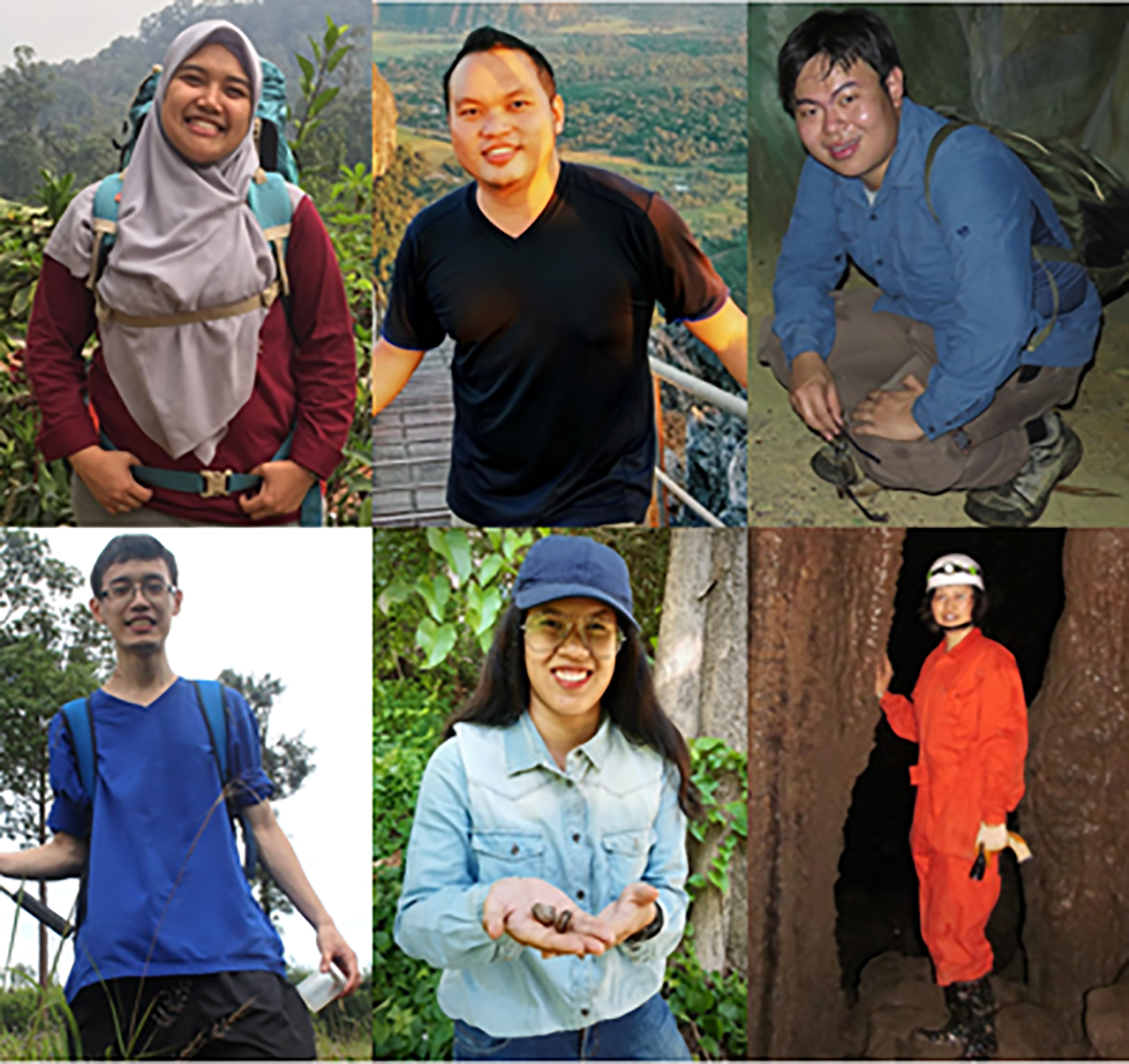The panel judging applications for the first year of this prize in honour of Tony Whitten were astonished by the number they received, and also by their quality. They have awarded the prizes to six conservationists and field biologists from East and South-east Asia, all of whom are under 35 years old and doing groundbreaking work on the sort of often overlooked species and habitats that Tony was most passionate about:
Ayu Savitri Nurinsiyah, for her work on the land snails of Java Ayu explores the diversity of land snails, and has been involved in the discovery of a number of new species, including Landouria tonywhitteni, named in honour of Tony Whitten. This species is endemic to Sukolilo karst, an area where there are conflicts between the cement industry and local people.
Evan Quah Seng Huat, for his work on the conservation of karst habitats in Myanmar Evan has been studying reptiles and amphibians in these little explored karst regions before they are quarried to satisfy the insatiable appetite for cement. He has been involved in the discovery of several new species, including the gecko Hemiphyllodactylus tonywhitteni, named in honour of Tony Whitten.
Junn Kitt Foon, for his work on conserving and taxonomically reviewing land snails in Malaysia Junn was inspired to pursue a conservation career by Tony Whitten's books and his passion for limestone biodiversity. Working alongside Tony taught him about the need to engage with and understand stakeholders, including communities, government, conservationists and extractive companies, when undertaking conservation work.
Ming-Kai Tan, for his work on taxonomy and orthopteran biodiversity in South-east Asia Ming-Kai surveys orthopterans throughout South-east Asia. He seeks to resolve taxonomic problems, name previously unnamed species, and provide species lists and distribution and natural history data so that protection of these neglected species is well-informed.
Nattawadee Nantarat, for her work on land snails in Thailand and South-east Asia Nattawadee analyses the biodiversity and evolutionary relationships of land snails in Thailand and South-east Asia to help support programmes for karst conservation. She has a particular interest in terrestrial operculate snails of the genus Cyclophorus.
Weixin Liu, for her work on millipede diversity in subterranean habitats in China Weixin carries out research on millipede diversity in subterranean habitats in China, working on phylogenetic relationships using both morphological and molecular characters. She is also investigating the status and ecology of millipedes, to provide data for their conservation.
In addition, six applicants were highly commended: Daoyuan Yu, for his work on the species diversity and biogeography of springtails in East and South-east Asia; Liew Jia Huan, for his work on understanding and conserving land snail diversity in Malaysia; Mark Louie D. Lopez, for his work on microcrustacean species in the Philippines and elsewhere in South-east Asia; Odbayar Tumendemberel, for her work on Gobi brown bears; Sheherazade, for her work on flying foxes in Sulawesi, Indonesia; and Wildan Ghiffary Turmudi, for his work on fisheries in Indonesia.

Top row, left to right: Ayu Savitri Nurinsiyah, Evan Quah Seng Huat and Junn Kitt Foon. Bottom row, left to right: Ming-Kai Tan, Nattawadee Nantarat and Weixin Liu.


